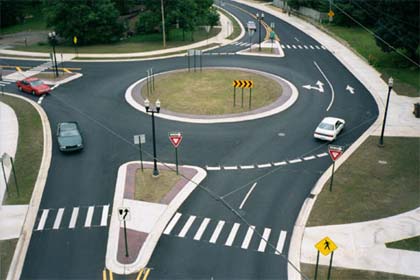The issue of elderly drivers in
America is a controversial one. The issue of accidents caused by the elderly
has sparked many plans to counteract their lessened physical capabilities
including having the elderly renew their driver’s license at the DMV every few
years. Some have gone as far as proposing a maximum driving age – similar to
the minimum legal age to drive. So far neither of these concepts have been
widespread, instead city planners have focused on making their roadways safer
to prepare for lesser drivers.
It has been documented that less
accidents occur on highways and interstate roads. Due to this, in his article
at http://www.pps.org/blog/wider-straighter-and-faster-not-the-solution-for-older-drivers/,
Gary Toth states that city planners have been trying to emulate highways since
1966 in order to reduce accidents. Planners have been making roads straighter and
wider like highways. Unfortunately, this has proved counterproductive, as these
new roads invoke drivers to speed unnecessarily and cause an increase in
accidents. While higher speeds are not as detrimental on interstates, in
pedestrian areas with lots of intersections this has demonstrated poorly.
What cities
have been doing has proven ineffective, and new measurements are needed. New plans call for courses that naturally reduce the speed limit. The elderly are at much
less risk to themselves and others when they, and other drivers, are driving at
a slower speed. At a slower speed, everyone has more time to react. Other plans
of action such as roundabouts can greatly reduce fatalities and major injuries.


I find it interesting the correlation between elderly drivers, accidents, and a need for safer roads. I find the argument not so compelling. I see elderly drivers and accidents a separate issue from safe roads/highways to reduce accidents.
ReplyDeleteIt is interesting to know that the U.S. is going to limit the maximum driving age. Similar to the minimum driving age, the elder need to be response to the safety of themselves and others. I saw many old people driving on the road. To my surprise, those old people always drive faster than the young. I think it is better to set the limits.
ReplyDeleteStatistics might say the elderly are more likely to be involved in accidents, but they don't say the elderly are the cause. Younger people are more likely to cause accidents due to overspeeding, multitasking, etc. Elder people get involved because they can't react quickly. The high rate of accidents among the elder is mostly made of accidents at intersections where reaction/reflexes are crucial, and also pile-ups (most likely caused by the driving habits of the younger generation).
ReplyDelete-O.I.
It's interesting that building wider and straighter roads would increase accidents since many car accidents occur on back, windy roads that are narrower and darker (at night). A maximum driving age seems unnecessary for elders especially when the majority of annual accidents are from young, inexperienced, and immature drivers. Because highways and interstates have cars traveling at higher speeds than local roads do, drivers could get the sense of fear more often forcing them to be more attentive. Also, roundabouts prove to be extremely effective for traffic relieve. For example; the roundabout off of North Main and Prices Fork.
ReplyDelete